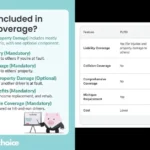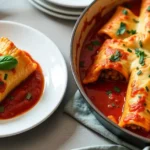Gyaru fashion is a vibrant and rebellious Japanese street style that challenges traditional norms and redefines beauty through exaggerated makeup, dramatic hair, and standout outfits. Bursting onto the scene in the 1990s, this bold aesthetic has influenced global fashion trends, social media aesthetics, and even high-end runway styles. In this detailed guide, we’ll explore everything about gyaru fashion, including its history, major substyles, cultural impact, modern relevance, and how to achieve this fearless look.
Origins and Evolution of Gyaru Fashion
A Statement Against Traditional Beauty
Emerging in Tokyo’s Shibuya district during the 1990s, gyaru fashion was initially seen as a rebellion against the traditional Japanese ideal of reserved femininity. Young women began using fashion as a loud statement of independence and self-expression.
“Gyaru is not just about appearance, it’s about attitude. It’s about being unapologetically yourself,” says Rei Kitamura, Japanese fashion researcher and stylist.
These girls—“gyaru,” derived from the English word “gal”—embraced tanned skin, bleached hair, dramatic makeup, and loud clothing. They rejected the conformist “kawaii” style, opting instead for confidence and individuality.
Popularity Peak and Decline
Gyaru exploded in popularity between the late ’90s and early 2010s. Magazines like Egg and Popteen championed the style, and brands catered to different subgroups. However, by the mid-2010s, gyaru fashion saw a decline due to changing societal attitudes and the rise of minimalist fashion.
Yet, it never truly disappeared. It evolved—shifting from the streets to online platforms and inspiring a new generation globally.
Types of Gyaru Styles
Ganguro
Ganguro gyaru are perhaps the most extreme and recognizable. Characterized by deeply tanned skin, white makeup, neon outfits, and wild hair colors, they represent a direct challenge to the fair-skinned beauty ideal.
Kogal (Kogyaru)
Kogal, or high school gyaru, wear shortened school uniforms, loose socks, and often carry luxury brand items. Their fashion is a mix of teenage rebellion and high-end consumerism.
Onee-gyaru
The more mature version of gyaru, Onee-gyaru is sophisticated, sexy, and refined. Women in their 20s and 30s opt for fitted dresses, elegant makeup, and a classy vibe.
Hime Gyaru
Inspired by princess aesthetics, Hime gyaru incorporates Rococo-inspired fashion with pastel dresses, voluminous curls, tiaras, and rhinestones.
Manba/Yamanba
An evolution of Ganguro, these styles feature extreme makeup, platform boots, and colorful hair. Manba gyaru often use stickers, glitter, and face paint as fashion elements.
Key Elements of Gyaru Fashion
Makeup
Heavy contouring, large circle lenses, false eyelashes, and dramatic eye shapes are essential. White eyeliner and dark tan skin were central to early gyaru looks.
Hair
Hair is often dyed light blonde or brown and styled into voluminous curls, bouffants, or teased pigtails. Wigs and extensions are common.
Nails
A hallmark of this fashion genre is elaborately decorated nails with rhinestones, charms, and pastel hues.
Clothing
Each substyle has unique preferences, but mini-skirts, platform heels, leopard print, lace, bows, and luxury brand logos frequently appear.
Attitude
Confidence, self-empowerment, and rejecting societal judgment are the underlying ethos of this fashion type.
Gyaru Fashion vs. Other Styles: A Comparison
| Feature | Gyaru Fashion | Kawaii Fashion | Harajuku Style | Western Street Style | Minimalist Fashion |
| Cost | Medium to High | Low to Medium | Medium | Medium | Low to Medium |
| Ease of Use | Moderate | Easy | Variable | Easy | Very Easy |
| Makeup Intensity | Very High | Light | Medium | Medium | Minimal |
| Cultural Roots | Japanese (1990s) | Japanese (1970s) | Mixed | American/European | Global |
| Popularity Today | Niche Revival | Mainstream | Subcultural | Widespread | Dominant Trend |
The Global Influence of Gyaru Fashion
Though it started in Japan, this fashion genre has inspired international audiences. TikTok and Instagram influencers now recreate iconic gyaru looks. Western brands have subtly incorporated gyaru-esque designs like platform shoes, vibrant prints, and exaggerated silhouettes.
Additionally, cosplay communities frequently include gyaru-styled characters in anime and manga recreations, keeping the style alive among enthusiasts.
“Gyaru may look extreme to some, but it opened the door for today’s body positivity and beauty diversity movements,” notes Ayaka Ishida, a Tokyo-based beauty blogger.
Gyaru in Pop Culture
Characters in anime like “Peach Girl” and “Super GALS!” highlight this fashion genre. J-pop icons like Namie Amuro and Ayumi Hamasaki heavily influenced the style during its peak. More recently, gyaru aesthetics appear in fashion shows and photo editorials worldwide, blending Japanese creativity with global fashion narratives.
Challenges Faced by Gyaru Community
Media Backlash
Mainstream media often misunderstood this fashion genre, associating it with delinquency or superficiality. This led to stigmas, particularly for women who chose to dress this way in professional settings.
Internal Gatekeeping
Some subgroups within the community have been criticized for exclusivity and elitism, particularly towards newcomers or those from outside Japan. However, recent efforts aim to make gyaru fashion more inclusive.
Cultural Sensitivity
Elements like extreme tanning sparked discussions on cultural appropriation and stereotyping. As the community evolves, there’s growing awareness about cultural representation and respect.
Reviving Gyaru: A Digital Renaissance
With platforms like YouTube and Instagram, a new wave of gyaru enthusiasts is emerging. Tutorials, fashion hauls, and community challenges have reinvigorated interest. Younger fans recreate vintage magazine looks while adding modern twists like sustainable beauty practices or gender-neutral styles.
How to Start Your Gyaru Journey
- Study Substyles – Start by learning the differences between Ganguro, Hime, and Onee-gyaru.
- Invest in Makeup – Acquire good-quality contour, lenses, and false lashes.
- Practice Hairstyles – Master big curls and dramatic volume.
- Join Communities – Platforms like Reddit and Discord offer beginner-friendly gyaru groups.
- Mix Modern Trends – Add personal flair without losing gyaru’s original essence.
Expert Tips for a Flawless Gyaru Look
- “Layer your lashes!” says Reina Sato, gyaru makeup artist. “Top and bottom lashes create that doll-like eye gyaru is known for.”
- Avoid drugstore hair bleach. Opt for salon-level products to achieve safe, bright colors.
- Choose bold accessories like heart-shaped handbags, chunky rings, or faux fur coats to complete your outfit.
The Future of Gyaru Fashion
Despite its fluctuating popularity, this fashion genre continues to evolve with time. It’s becoming more gender-inclusive and eco-conscious. New-age gyaru wearers blend traditional elements with modern needs—like sustainable makeup, cruelty-free lashes, and slow fashion brands.
The style may not dominate magazines like before, but it thrives online and in global subcultures, proving that this fashion genre still speaks to individuality and self-expression in the digital age.
Conclusion
Gyaru fashion isn’t just about bold makeup and daring clothes—it’s a movement that empowers people to embrace their identity and reject conformity. While it has seen transformations over decades, the essence of gyaru—confidence, self-expression, and joy—remains stronger than ever. Whether you’re diving in as a beginner or rekindling your love for the style, this fashion genre offers a rich, colorful world of beauty and cultural rebellion to explore.
FAQs
What does “gyaru” mean in Japanese?
Gyaru is a transliteration of the English word “gal” and refers to a fashion-conscious girl who defies traditional beauty norms.
Is this fashion genre still popular in Japan?
While not as mainstream as in the 2000s, this fashion genre is enjoying a niche revival, especially among digital communities and fashion enthusiasts.
Can men wear gyaru fashion?
Absolutely. This fashion genre has evolved to include gender-neutral and male versions, often called “gyaruo.”
Is gyaru fashion expensive to maintain?
It depends on the substyle. While some require investment in hair and makeup, others can be achieved affordably through DIY methods.
How is this fashion genre different from kawaii?
Kawaii focuses on innocence and cuteness, while gyaru is bold, glamorous, and often rebellious in tone.
Where can I learn gyaru makeup techniques?
YouTube and TikTok offer excellent tutorials from global gyaru artists and beauty influencers.











